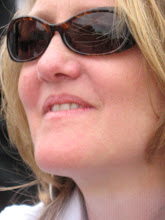 Last Saturday night, the Uber-Mensch and I found ourselves wandering the streets of oldest Paris. We passed a remnant of the 12th century Philippe-Auguste wall, scooted behind the Pantheon where such famous French souls as Marie and Pierre Curie are laid to rest, and shot in front of the 200-year-old school of science, the Ecole Polytechnique. We searched for a hip Latin Quarter restaurant with an up-and-coming chef, both named Christophe, that we'd read about in our favorite restaurant guide, Hungry for Paris. At last we located our destination, nestled between two busy student bars on the rue Descartes. The name of the street brought to mind France’s great 18th century scientific expedition, the one that included Joseph de Jussieu. So, while sipping a coupe of Champagne and awaiting our entrées (first course), I shared the story with the U-M.
Last Saturday night, the Uber-Mensch and I found ourselves wandering the streets of oldest Paris. We passed a remnant of the 12th century Philippe-Auguste wall, scooted behind the Pantheon where such famous French souls as Marie and Pierre Curie are laid to rest, and shot in front of the 200-year-old school of science, the Ecole Polytechnique. We searched for a hip Latin Quarter restaurant with an up-and-coming chef, both named Christophe, that we'd read about in our favorite restaurant guide, Hungry for Paris. At last we located our destination, nestled between two busy student bars on the rue Descartes. The name of the street brought to mind France’s great 18th century scientific expedition, the one that included Joseph de Jussieu. So, while sipping a coupe of Champagne and awaiting our entrées (first course), I shared the story with the U-M. It was the age of Enlightenment. Knowledge was the new power. And the race was on to ascertain the true size and shape of the earth. French scientists held to the established theory of French philosopher, Rene Descartes (1596–1650), who claimed that the earth was prolate: longer in diameter from pole to pole and squished or pinched at the equator rather like a pot-bellied man wearing a tight belt. But across the channel in England, a young up-start named Isaac Newton had another notion. Studying Jupiter each night, as Galileo Galelei had done a century before him, Newton believed that the earth bulged at the equator and shortened slightly from pole to pole, making it oblate in shape. He theorized that the length of the earth’s arc would therefore be longer at the equator than at its northern and southern extremes.
It was the age of Enlightenment. Knowledge was the new power. And the race was on to ascertain the true size and shape of the earth. French scientists held to the established theory of French philosopher, Rene Descartes (1596–1650), who claimed that the earth was prolate: longer in diameter from pole to pole and squished or pinched at the equator rather like a pot-bellied man wearing a tight belt. But across the channel in England, a young up-start named Isaac Newton had another notion. Studying Jupiter each night, as Galileo Galelei had done a century before him, Newton believed that the earth bulged at the equator and shortened slightly from pole to pole, making it oblate in shape. He theorized that the length of the earth’s arc would therefore be longer at the equator than at its northern and southern extremes. A decisive experiment was needed. In 1733, King Louis XV – the same king who would later lay the foundation for the Pantheon – resolved that France would be first to unlock this mysterious puzzle, even if it proved Descartes wrong. It took two years to assemble and equip a team of French mathematicians, astrologers, map-makers, and engineers with the most highly technical scientific instruments and gadgets of their day. It would be "the greatest scientific expedition the world have ever known".
A decisive experiment was needed. In 1733, King Louis XV – the same king who would later lay the foundation for the Pantheon – resolved that France would be first to unlock this mysterious puzzle, even if it proved Descartes wrong. It took two years to assemble and equip a team of French mathematicians, astrologers, map-makers, and engineers with the most highly technical scientific instruments and gadgets of their day. It would be "the greatest scientific expedition the world have ever known".Their mission: to measure the length (or degree) of the earth’s meridian (its north-south axis) at the equator in Peru. The measurement obtained there, when compared to the same measurements from Paris and Swedish Lapland, where a similar expedition was also heading, would prove who was right: the Cartesians or the Newtonians.
“Why Peru?” the U-M wanted to know. “Wouldn’t Africa have been easier?”
But just as I was about to answer, out came my trio of Dublin Bay prawns wrapped with basil in a light pastry blanket and served on a bed of fresh greens.
The taste? Bref: Exquisite.
The rest of the story would have to wait until I’d savored the medley of flavors in this delectable dish brought to life with a white burgundy specially selected by the chef…
**
When next in Paris, try this bonne addresse: Christophe, 8 rue Descartes, 5th arrondissement.
But wait, stayed tuned, there’s more of both meal and story…
Sources:
Lobrano, Alexander. Hungry for Paris. Random House, New York, 2008.
The Great Expeditions. National Geographic, London, 2007.
Whitaker, Robert. The Mapmaker's Wife. Bantam Books, London, 2005.
Images:
Photo of the Paris Pantheon at night, courtesy of Wikimedia Commons, Copyright © 2004 David Monniaux.
1730 painting of King Louis XV by Hyacinth Rigaud, Courtesy of Wikimedia Commons.

No comments:
Post a Comment